
One of the most critical decisions at harvest time is when to pick the grapes. Pick too soon or too late and your wine won’t reflect its vineyard origins: you end up with a wine of style. And picking late also results in grapes that need lots of additions in the winery. It’s for this reason that winemakers have to leave the winery and get out in the vineyards at this, the busiest time of year. I went out with Marelise Riemann (Momento) to check on the Anysbos vineyard in Bot River. This is owned by Johan Heyns, who’s the brother of Gabrielskloof owner Bernhard Heyns. Johan bought this farm, which neighbours his brother’s, a few years back when he moved down from Johannesburg. Marelise makes some wine for him, as well as sourcing some grapes for herself. She walked round the blocks with a plastic bag, stopping at random intervals to pick grapes. She says it’s best not to look too much but just to grab a bunch, otherwise you tend to be biased and pick a bunch that matches (visually) your picking intuitions.

This part of the vineyard is planted with bush vine Grenache. This is second crop, and the vines are looking great, even though they have been dry farmed and there has only been 350 mm rain this season. Grenache as a variety, and bush vines as a way of growing vines, really suit the conditions in most South African vineyards.

The grapes look and taste great and Marelise thinks they should be ready to pick. She tends to pick early, which is something I appreciate. Very few winemakers make a wine and say afterwards I wish I had picked later.

These are the soils. Clay and iron-rich shale.

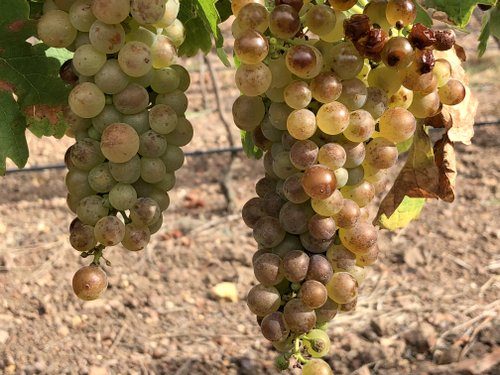
This is some conventionally trellised Rousanne from another part of the farm. Looking good.

Johan is a fan of the southern Rhone, and this is bush vine Grenache Blanc.
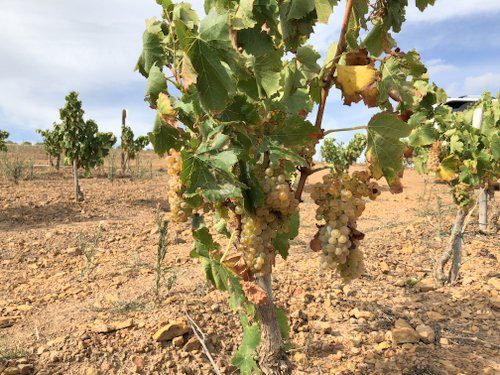

The grapes look great and are almost ready for harvest.
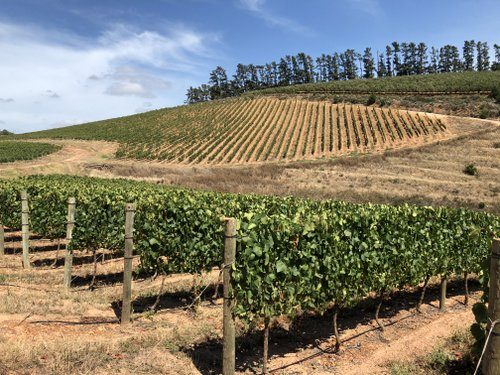
Then I headed out with Peter-Allan Finlayson. We stopped first at Charles Fox in Elgin. He buys some grapes here, and the Chardonnay is looking beautiful. No need to sample: some of this block has already been picked and so the analysis is known, and the figures are looking great. Very clean fruit, good acid, nice flavours.

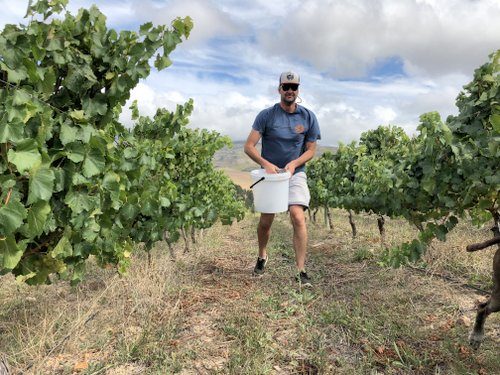
Then we headed over to the Hemel-en-Aarde Ridge. This is the Clay Shales vineyard, source to some excellent Chardonnay. I asked him what the soils were. He looked at me puzzled. ‘Clay and shales.’ OK, I should have got that one.
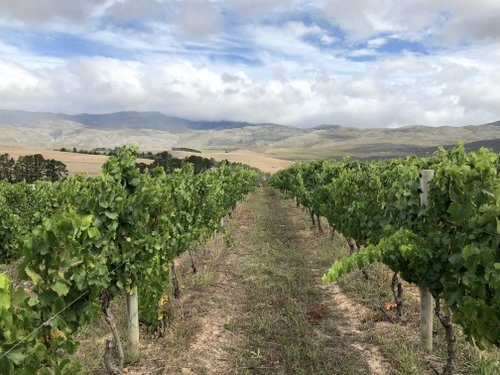
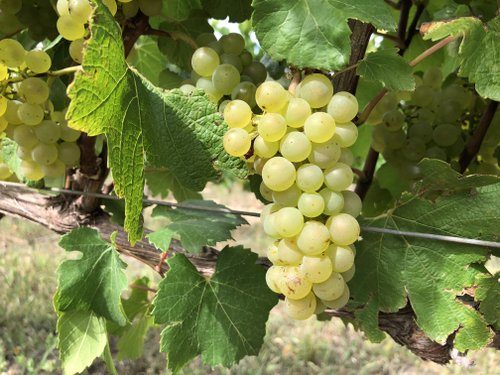
This is the Chardonnay: still some way off by taste, but Peter-Allan bagged some up to analyse later. He takes a vine and then takes all the fruit from one arm, to avoid any bias in selecting bunches.
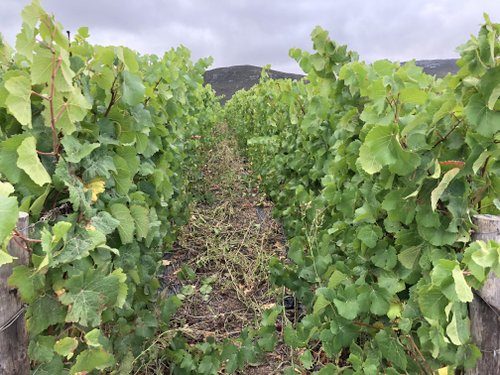
Next to the Clay Shales, there’s the Cinema Vineyard. Close planted Pinot Noir: this has already been picked, and is what we were processing a couple of days ago. It makes such good wine.

Back at the winery, I mushed up the sample bunches and took a reading of Brix. The Clay Shales Chardonnay needs a bit more time. By taste, the acid was unpleasantly high, too.
Harvest at Gabrielskloof:
- Managing red wine ferments
- Vineyard sampling
- Collecting grapes
- Pressing Chenin Blanc and sorting Pinot Noir
- Pressing Grenache Gris and barrel work
- The final instalment
Leave a Comment on Harvest at Gabrielskloof: vineyard sampling